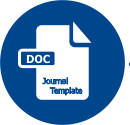Studi Perencanaan Usaha Keripik Kaca Menggunakan Business Model Canvas
DOI:
https://doi.org/10.12928/jfc.v3i1.3945Keywords:
Business Model Canvas, business plan, keripik kaca, perencanaan, usahaAbstract
The business world needs a business plan that can help entrepreneurs prepare everything needed for the smooth running of their business. This business plan can be made in the form of a business plan. One business plan model that has many advantages is the Business Model Canvas. The purpose of writing this article is to find out what needs to be considered in making a business plan using the Business Model Canvas. The results of the literature review show that using the Business Model Canvas business planning becomes clearer and more focused. The glass chip business, which is an example in the application of the canvas business model, is becoming more focused and clear. Therefore, in making a business model, the canvas has 9 important components, including Customer Segment, Value Propositions, Channels, Customer Relationships, Revenue Streams, Key Activities, Key Partnerships, Key Resources and Cost Structures that need to be considered and structured clearly to help run the business.
Keywords: business, Business Model Canvas, business plan, glass chips, planning
ABSTRAK
Dunia usaha memerlukan suatu perencanaan usaha yang dapat membantu wirausahawan menyiapkan segala sesuatu yang dibutuhkan untuk kelancaran usahanya. Perencanaan usaha ini dapat dibuat dalam bentuk business plan. Salah satu model business plan yang banyak memiliki keuntungan yaitu Business Model Canvas. Tujuan dari penulisan artikel ini adalah untuk mengetahui apa saja yang perlu diperhatikan untuk membuat perencanaan usaha menggunakan Business Model Canvas. Hasil dari penelaahan pustaka menunjukkan dengan menggunakan Business Model Canvas perencanaan usaha menjadi lebih jelas dan terarah. Usaha keripik kaca yang menjadi contoh dalam penerapan Business Model Canvas ini menjadi lebih terarah dan jelas. Oleh karena itu dalam pembuatan Business Model Canvas memiliki 9 komponen penting diantaranya Customer Segment, Value Propositions, Channel, Customer Relationship, Revenue Streams, Key Activities, Key Partnership, Key Resources dan Cost Structure yang perlu diperhatikan dan disusun dengan jelas agar membantu kelancaran usaha.
Kata Kunci: Business Model Canvas, business plan, keripik kaca, perencanaan, usaha
References
Euis, S., Hubeis, S., dan Maulana, A. 2014. Analisis model bisnis pada KNM fish farm dengan pendekatan Business Model Canvas (BMC). Jurnal Sosek KP, 9 (2): 185-194
Gunawan, M. F. 2016. Perancanagan Business Model Canvas sebagai alternative strategi bisnis budidaya ikan gurame (studi kasus pada ukm mitra mina desa Sridadi kecamatan Kalirejo Lampung Tengah). dilihat 1 Juni 2018. Retrieved from Http://digilib.unila.ac.id/21790/20/skripsi%20tanpa%20bab%20pembahasan.pdf.
Hisrich, D. R., and Peters, M.P. 2008. Enterpreneurship. New York: McGraw Hill
Kasmir. 2006. Kewirausahaan. Jakarta : Rajawali Pers. Edisi Revisi
Osterwalder, Alexander, & Pigneur, Yves. 2010. Business Model Generation . John Wiley & Sons, Inc., Hoboken, New Jersey
Permana, D. J. 2013. Analisis peluang bisnis media cetak melalui pendekatan bisnis model canvas untuk menentukan strategi bisnis baru. Faktor exacta ISSN: 1979-276X, 6(4), 309-319.
Rainaldo M., Wibawa, B.M., Rahmawati, Y. 2017. Analisis Business Model Canvas pada operator jasa online ride-sharing (Studi kasus Uber di Indonesia). Jurnal Sains dan Seni ITS, 6 (2): 235-239.
Rukka, M.R., Busthanul, N., dan Fatonny, N. 2018. Strategi pengembangan bisnis dengan pendekatan busines model kanvas (Studi Kasus Pada CV. OAG di Kota Makasar, Sulawesi Selatan). Jurnal Sosial Ekonomi Pertanian, 14 (1) : 41-54.
Suryana. 2009. Mompreneurship. Jakarta : Andi Offset
Wardhanie,A. P. 2017. Buku ajar model bisnis. Surabaya: PT. Revka petra media
Yildirim, N., Askun, O. B. 2012. Entrepreneurship Intentions of Public Universitiesin Turkey: Going Beyond Education and Research? 8th International Strategic Management Conference, Procedia Social and Behavioral Science.
Downloads
Published
Issue
Section
License
Copyright (c) 2021 Ayuni Rizma Maulida, Andre Geza Haryanto

This work is licensed under a Creative Commons Attribution-ShareAlike 4.0 International License.
Authors who publish with JOURNAL OF FOOD AND CULINARY agree to the following terms:
- All articles published are Open Access that means they will be immediately and permanently free for everyone to read and download. We use the CC-BY-SA license options under Creative Commons Attribution License (CC BY-SA 4.0). Creative Commons Attribution License (CC BY-SA 4.0). CC-BY-SA assures that all works will be available under CC-BY-SA always and no risk of commercial actions against the will of the copyright holder.
- Anyone can use, copy and disseminate the material in any medium or format; as well as re-use, re-mix, transform, and build upon the material for any purpose, even commercially. However, they must acknowledge the authors by giving appropriate credits (cite to the article or content), provide a link to the license, and indicate if changes were made and use under the same license as the original.
- Authors retain copyright and grant license exclusive rights in their article to Universitas Ahmad Dahlan as publisher of the JOURNAL OF FOOD AND CULINARY.
- Authors have the right to retain patent, trademark and other intellectual property rights (including research data).
- Authors have the right to proper attribution and credit for the published work.
Copyright Transfer Agreement
- The Authors submitting the manuscripts do so on the understanding that if they are accepted for publications, copyright of the articles shall be assigned to Universitas Ahmad Dahlan as publisher of the JOURNAL OF FOOD AND CULINARY.
- Universitas Ahmad Dahlan as publisher of The JOURNAL OF FOOD AND CULINARY, the Editors, and the Editorial Board Members of the JOURNAL OF FOOD AND CULINARY make every efforts to ensure that no wrong or misleading data, opinions or statements are published in the journal. In any way, the contents of the articles and circulars published in the JOURNAL OF FOOD AND CULINARY are the sole and exclusive responsibility of their respective authors and advertisers.
- The publisher may revoke the publication for violating the ethical code of conduct.





